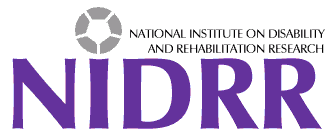The Rehabilitation Research and Training Center on Individual-Level Characteristics Related to Employment Among Individuals with Disabilities (IC-RRTC) is generating new knowledge about the role of individual characteristics on employment outcomes. Despite the ADA and advances in medicine and technology, people with disabilities, as a group, have become economically less self-sufficient over the last few decades. For people with disabilities, employment rates have declined, reliance on public benefits has increased, and household incomes have fallen further behind those of other households. In addition, there are substantial disparities in employment outcomes within the population with disabilities. The IC-RRTC will work toward improving strategies and interventions designed to foster better employment outcomes for the various subpopulations of people with disabilities
We frame our research around the three following three domains that affect employment outcomes.
- Health conditions including the physical and mental characteristics that underlie disability
- Personal characteristics including demographic characteristics, human capital (education and training), and social capital (an individual’s family, community and employment relationships) and
- Environmental characteristics including accessibility, transportation, the local economy, public policies, and geography.
This framework blends the social model of disability with labor economic theory, adopting the framework of the International Classification of Functioning, Disability and Health (ICF). We will test a series of hypotheses regarding the effect of characteristics in each of these domains (and their interactions) on employment outcomes.
There will be three research phases, with each subsequent phase informing the next.
- Phase 1–Existing Literature entails a comprehensive review of the vocational rehabilitation and social science literatures on facilitators and barriers to employment for persons with disabilities.
- Phase 2–Existing Data extends the key findings from Phase 1, utilizing data from disability-related public programs and national and international surveys. In particular, we will examine geographic and individual variation in these data to support identification of individual, social, economic, and environmental barriers and facilitators to employment.
- Phase 3–New Data will fill gaps identified in Phase 1 and not addressed by Phase 2 through collection of new data. We will design, implement, and analyze the National Survey on Disability and Employment (NDSE), which will be a disability follow-back survey attached to the next Heath System’s Change Household Survey, a periodic health care survey conducted by Mathematica Policy Research. The NDSE provides an opportunity to address key evidence gaps that are not addressed in the literature and cannot be addressed through analysis of extant data.
To ensure the utilization of our findings in the development of new strategies and innovations, the Hunter IC-RRTC is conducting a series of outreach projects design to reach and work with key audiences (e.g., CSAVR, AAPD, RSA, ODEP, BLN, TACE Centers). Representatives from these organizations serve on the RRTC Policy and Scientific Review Committee (SRC) and meet with project staff on a regular basis, in person and through teleconference. The culminating output of the Hunter IC-RRTC will be the publication of an edited volume, Employment and Disability in America, which will summarize the IC-RRTC findings in a durable, lasting, highly visible format.

The Rehabilitation Research and Training Center on Individual-Level Characteristics Related to Employment Among Individuals with Disabilities is a five-year, $225,000 project funded by the U.S. Department of Education, National Institute for Disability and Rehabilitation Research (NIDRR), under cooperative agreement H133B100011. The contents do not necessarily represent the policy of the U.S. Department of Education and you should not assume endorsement by the Federal Government.